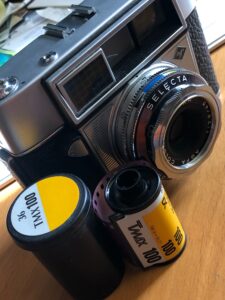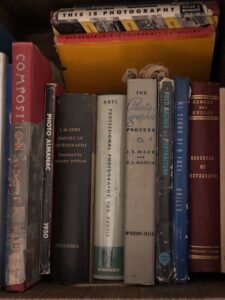Film photography is all the rage now if you’re cool and grew up with digital (spoilers: I’m not and I didn’t). Everywhere you turn there are brag accounts and experimental accounts and people trying to fake film with digital and faking digital with film. Easy to say, one might thing, that this whole nostalgia thing has gotten out of hand.
If you say that though, you’d be wrong. It is definitely the case that there are lots of people (typically younger) who may be overenthusiastic about the breadth of creation that can happen with chemical photography and who may not be shy about misrepresenting their creations.
While I am a purist from the honesty perspective (DON’T MISREPRESENT OR MIS-CATEGORIZE YOUR IMAGE! There’s an audience for just about everything as long as you don’t lie about it.) I think it’s an incredible explosion of creativity, an illuminating (ahem) dive back into the origins of the capture and preservation of images.
Want to use bubblegum-tinted emulsion film or a 100-year old camera? Great! Just like a digital camera is really just a tool, so are these. What can you create in traditional styles? What non-traditional artistic efforts will come from looking at things old with new eyes?

If you’ve read this far, you can probably guess (this is where the spoilers come in) I’m not among the newer wave of visual capture artists; my introduction to the craft goes back multiple decades. I’ve shot digital exclusively for just under half the time that’s passed since my first visit to a school darkroom. When I switched over, I sold my film camera and really never looked back.
Whenever the topic of returning to film came up, my answer was always some variation of “never say never, but not on the list right now”. Why? Digital was cheaper, more convenient, and fit my personal workflow so much better given that other things I do revolve around screens and keyboards as well.
 So, why am I writing (and you reading) this? I was presented with an opportunity that ultimately turned out to be too good to pass up: curating significant portions of a collection of photography books, gear, and negatives (probably anyway in the not-too-distant future) from overwhelmingly the 1940s and 1950s. I said “no” to this multiple times until finally I gave in (poor me!) and said yes. Boxes of books (including references published during wartime) started wearing down my resolve. More boxes of gear (large chunks of truly classic chemical darkroom equipment like tanks and contact printers, for examples) eroded the resistance even further, until I was forced (I’m telling you, it was terrible!) to capitulate and take on the task of “the rest” of that collection, or at least what was being parted with at that point in time.
So, why am I writing (and you reading) this? I was presented with an opportunity that ultimately turned out to be too good to pass up: curating significant portions of a collection of photography books, gear, and negatives (probably anyway in the not-too-distant future) from overwhelmingly the 1940s and 1950s. I said “no” to this multiple times until finally I gave in (poor me!) and said yes. Boxes of books (including references published during wartime) started wearing down my resolve. More boxes of gear (large chunks of truly classic chemical darkroom equipment like tanks and contact printers, for examples) eroded the resistance even further, until I was forced (I’m telling you, it was terrible!) to capitulate and take on the task of “the rest” of that collection, or at least what was being parted with at that point in time.
It takes a while to get through boxes of “stuff” like this. Some items are labeled (or original boxes even!), others are obvious, still further finds appear custom or hand-crafted. 35mm, 620, Polaroid cameras to test. Paper, slide glass, and chemicals (danger!) to evaluate. Tools and tongs and tanks and trinkets, all waiting to be catalogued, some apparently not having been seen in 50 years.
 This is exciting stuff if you appreciate the history of chemical photography (me – since one of my soapboxes is how digital and chemical photography aren’t actually as different from each other as some would like to present) or if you’re new to the game and “rediscovering anew” what your parents (more likely, grandparents) were so on about all the time.
This is exciting stuff if you appreciate the history of chemical photography (me – since one of my soapboxes is how digital and chemical photography aren’t actually as different from each other as some would like to present) or if you’re new to the game and “rediscovering anew” what your parents (more likely, grandparents) were so on about all the time.
No project of this nature can be done in modern times without documenting it (I heard it’s a must-follow rule) so here we go with a hashtag on the Instagram account and blog posts like this (and maybe podcast episodes and who knows what else)…
Welcome to the #WaybackBox project.




